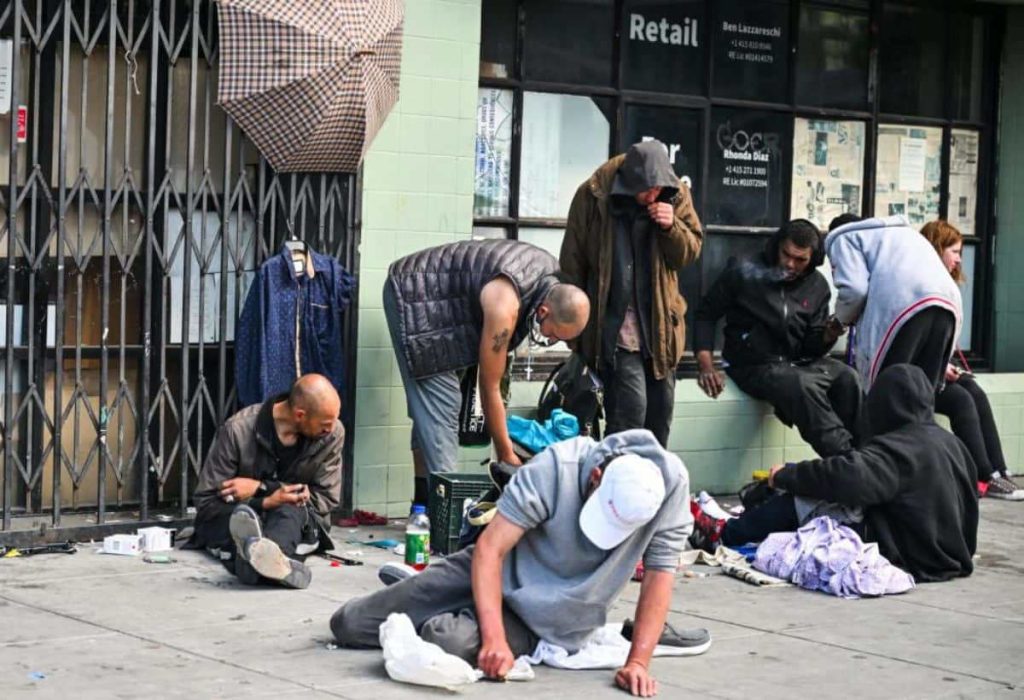In recent years, San Francisco has faced a growing challenge with illegal drug use, particularly with highly addictive and deadly substances like “tranq” Xylazine and Fentanyl. These drugs have contributed to an alarming number of drug overdose deaths, highlighting the urgent need for effective interventions to address this public health crisis. As the city seeks solutions, one approach gaining attention is the concept of Incarceration-Based Rehabilitation. This method involves providing rehabilitation programs within the criminal justice system, utilizing the resources of the San Francisco Sheriff’s Office (SFSO) to offer a controlled environment for individuals with substance use disorders to receive treatment and support.

The key to this approach lies in recognizing the intertwined nature of substance abuse and criminal behavior. Many individuals who engage in illegal drug use find themselves caught in a cycle of addiction and criminal activity, often leading to incarceration. Traditional punitive measures, such as imprisonment without addressing the underlying issues, have proven ineffective in breaking this cycle. Incarceration-Based Rehabilitation seeks to address both the criminal behavior and the root cause of substance abuse through a comprehensive program.
The SFSO plays a central role in this approach by leveraging its resources and expertise to create an environment conducive to rehabilitation. Deputy Sheriffs, who are already responsible for maintaining order and security within jail facilities, can be trained to provide support and guidance to individuals with substance use disorders. By working closely with trained professionals, participants in the program can access a range of services tailored to their needs, including counseling, medical treatment, and vocational training.
One of the key advantages of Incarceration-Based Rehabilitation is its ability to provide a structured and supervised environment for individuals to address their substance abuse issues. Unlike traditional treatment programs that rely on voluntary participation, this approach offers a more controlled setting where participants are encouraged to engage in treatment and are held accountable for their progress. By integrating rehabilitation into the criminal justice system, the program can also ensure that individuals receive the support they need while serving their sentences, increasing the likelihood of successful reintegration into society upon release.
Moreover, Incarceration-Based Rehabilitation can be a cost-effective solution for San Francisco. By addressing substance abuse issues within the criminal justice system, the program has the potential to reduce recidivism rates, leading to long-term savings associated with lower incarceration and criminal justice costs. Additionally, by breaking the cycle of addiction and criminal behavior, the program can contribute to a safer and healthier community, benefiting the city as a whole.
Importantly, this system is designed not only to address the substance abuse issues but also to attend to the overall well-being of the individuals in the program. Participants will have access to healthcare, including medical and mental health services, to address any underlying health conditions or mental health needs. They will also receive clean clothing, access to bathing facilities, and a clean environment, promoting hygiene and overall health. Deputy Sheriffs will ensure their safety, creating a secure environment conducive to recovery.
Given the grave risks associated with drugs like “tranq” Xylazine and Fentanyl, providing a comprehensive program like Incarceration-Based Rehabilitation is crucial for keeping individuals alive and getting them on the path to recovery. By offering a holistic approach that addresses both the substance abuse issues and the broader needs of the individuals, this system has the potential to make a significant impact on the lives of those struggling with addiction in San Francisco. Will San Francisco value human life and do this to stop the cycle of addiction and overdose deaths?



 Mayor London Breed’s strategic defunding of the Sheriff’s Department in San Francisco has ignited concerns among law enforcement officials and citizens alike. Operating under the radar, these silent defunding measures, such as the denial of the longevity incentive proposal on May 15th, 2023, and disproportionate budget cuts, are adversely impacting the department’s staffing levels and compromising public safety. Let’s examine these covert actions and their potential ramifications on the Sheriff’s Department.
Mayor London Breed’s strategic defunding of the Sheriff’s Department in San Francisco has ignited concerns among law enforcement officials and citizens alike. Operating under the radar, these silent defunding measures, such as the denial of the longevity incentive proposal on May 15th, 2023, and disproportionate budget cuts, are adversely impacting the department’s staffing levels and compromising public safety. Let’s examine these covert actions and their potential ramifications on the Sheriff’s Department.


